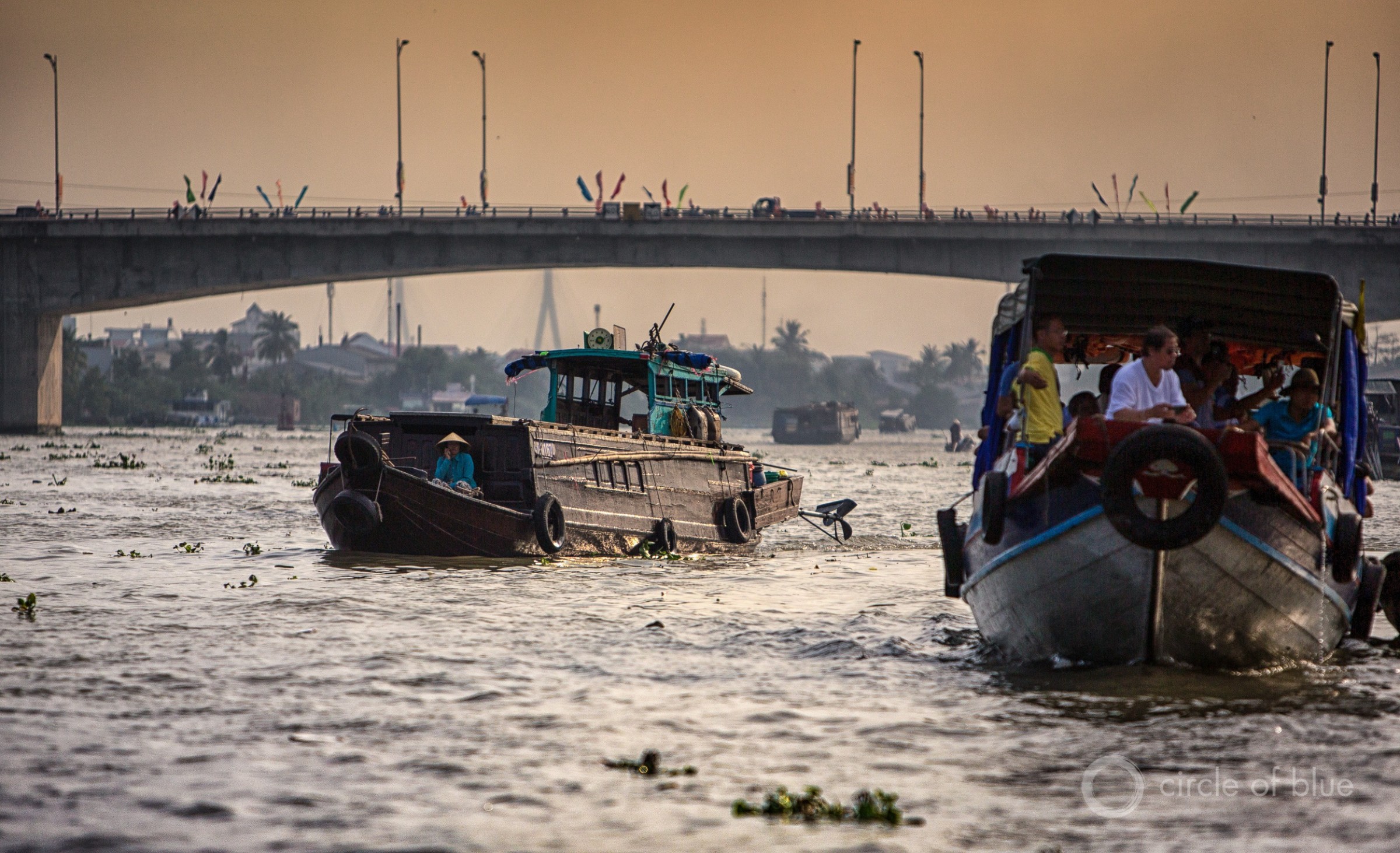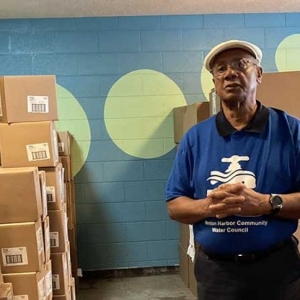Freshwater species are dying off and decreasing in abundance. Yet conservation funding centers on lands and oceans.

Boats ply the waters of the Mekong River Delta, near Can Tho, Vietnam. Home to about 65 million people across four countries, the lower Mekong is also prized for its diversity of aquatic species. Photo © J. Carl Ganter/Circle of Blue
By Stefan Lovgren – December 16, 2021
In recent years I’ve been writing about global freshwater issues, with a particular focus on Southeast Asia’s Mekong River. As someone who came to this field of study relatively recently, I’ve been shocked and perplexed that freshwater biodiversity is seldom prioritized.
In my writings, I usually synthesize the importance (and degradation) of our rivers, lakes, and wetlands — and the fish living in them — into a few startling sentences:
- While fresh water makes up less than one percent of Earth’s flowing water, it is home to 10 percent of all known species, including a third of all vertebrates.
- There are more kinds of freshwater fish—18,075 and counting—than there are fish species living in the oceans and seas.
- Freshwater populations across the world have declined by an average of 84 percent in the last 50 years, twice the rate of terrestrial or marine ecosystems.
- Almost a third of freshwater fish species are now threatened with extinction.
Despite this unprecedented and ongoing decline, research and conservation related to freshwater ecosystems receive far less attention than those of terrestrial and marine realms. A recent report on environmental funding by 127 European foundations shows that freshwater work received less than two percent of the €745 million (US$873 million) in environmental grants awarded in 2018. Freshwater work ranked second-to-last among the 13 thematic-issue categories used to assess grant distribution.
As a journalist, I’ve been asking why it is that freshwater issues are so often ignored. It doesn’t make sense. After all, fresh water is fundamental to life on Earth. Almost all of us live in river basins. I’ve talked to a lot of smart people about this disconnection, but so far I’ve found few satisfying answers.
What’s clear is that, if policymakers are to take action on freshwater ecosystems, scientists and conservationists need to coordinate to deliver a more forceful message. The good news is that we’re seeing more signs of that happening. On December 1, for example, researchers from 88 scientific institutions worldwide, led by the Leibniz Institute of Freshwater Ecology and Inland Fisheries (IGB) in Berlin, published a proposal in the journal Ecology Letters for a new global research agenda to improve freshwater biodiversity research.
The agenda lists 15 priority needs, which are grouped into five categories that include data infrastructure, monitoring, ecology, management, and social ecology. The authors call for greater collaboration among researchers, better use of technology, and incorporating Indigenous knowledge of freshwater systems, as well as engaging with citizen scientists. Above all, says Sonja Jähnig, an aquatic ecologist at IGB, “lakes, rivers, ponds and wetlands should be explicitly recognized as important habitats and ecosystems in their own right by policy makers and funding organizations, and in management and restoration programs.”
The latter is an important point for river protection, which has long been seen as part of terrestrial protection. Protect the land and you’ll protect the river that runs through it, the thinking has been, even though overwhelming evidence suggests that such an approach generally does not work. We know that rivers need their own safeguards, and we also know we are going to need a multi-tiered approach if we want to keep rivers healthy and free-flowing. There’s no silver bullet.
The new agenda follows a major scientific paper that was published in BioScience last year in which scientists from the World Wildlife Fund, IUCN, Conservation International, and other institutions outlined a six-point Emergency Recovery Plan to reverse freshwater biodiversity loss. That paper emphasized a long list of priority actions, such as improving water quality, restoring critical habitats, managing the exploitation of freshwater ecosystem resources, controlling nonnative species, and restoring river connectivity.
These initiatives were designed specifically to elevate and strengthen freshwater targets and indicators for the Convention on Biological Diversity and the Sustainable Development Goals. Scientists stress the importance of new global biodiversity agreements that pay as much attention to protecting and restoring the world’s rivers, lakes, and wetlands as its forests and oceans.
Meanwhile, as a journalist, I will continue to share these stories of fresh water and fish that still remain woefully underreported. I especially want to seek out stories of optimism and solutions. I know they’re out there. In the last year I’ve reported on many of them, from dam removals and legal protections for rivers to the campaign to turn the Vjosa River in Albania into the first wild river national park.
Earlier this month, I was in Cambodia where I visited Tonle Sap Lake, Southeast Asia’s largest lake and the world’s largest inland fishery. In the last three years, water levels in Tonle Sap have reached historical lows, and fisheries have declined precipitously. In response, some lake communities have decided to establish reserves where harvesting fish is prohibited.
So far, the signs look promising.
Stefan Lovgren writes about fish and freshwater issues for National Geographic and others. He works with the USAID-supported research project “Wonders of the Mekong,” and is the co-author with Zeb Hogan of the forthcoming book “Chasing Giants: The Search for the World’s Largest Freshwater Fish.”




